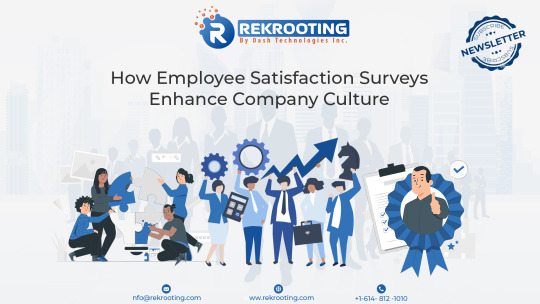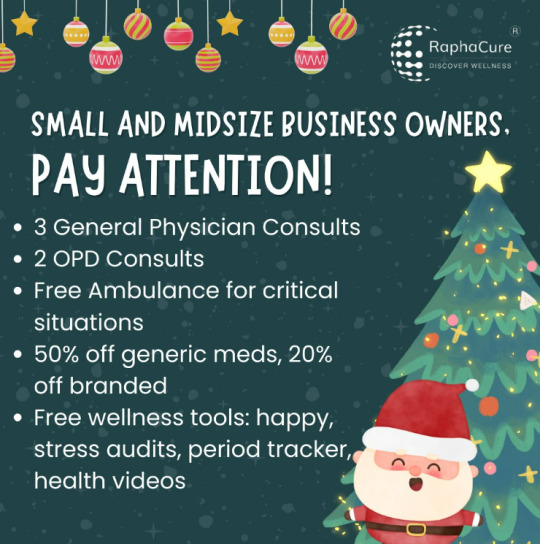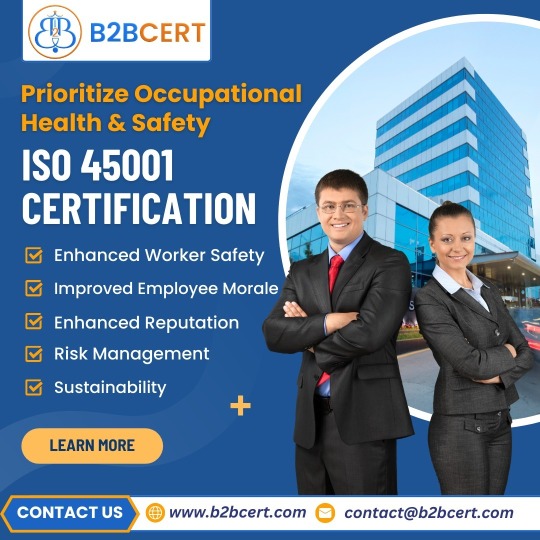#WorkplaceWellbeing
Text

How Employee Satisfaction Surveys Enhance Company Culture ?
Providing feedback to staff members is essential to creating a welcoming work environment that motivates individuals to put in long hours, learn new skills, and progress in their careers.
Proper feedback can help employees become more competent and effective workers who can also better manage their projects or subordinates.
This goes beyond the scope of regular performance assessments. Read this newsletter to know more in depth.
#EmployeeSatisfaction #CompanyCulture #TeamEngagement #WorkplaceWellbeing #EmployeeEngagement #FeedbackMatters#HappyEmployeesHappyCompany
#EmployeeSatisfaction#CompanyCulture#TeamEngagement#WorkplaceWellbeing#EmployeeEngagement#FeedbackMatters#HappyEmployeesHappyCompany
3 notes
·
View notes
Text
Creative Concepts: Designing Office Carpets for Success in Dubai
The Future of Office Flooring: Innovations and Sustainability in Dubai
In Dubai, the future of office flooring is taking a leap into the realm of innovation and sustainability, especially in the context of office carpet in Dubai. From smart flooring technology to eco-friendly materials and modular designs, the landscape of office floors is evolving to meet the demands of modern workplaces. Let's dive into these exciting trends and explore how they can revolutionize office spaces while aligning with Dubai's sustainability goals.
Smart Flooring Technology: Enhancing Efficiency and Comfort
Imagine walking into an office where the floor adapts to your needs - that's the promise of smart flooring technology. These futuristic floors are equipped with sensors and actuators that adjust lighting, temperature, and even acoustic properties based on occupancy and usage patterns. In Dubai's dynamic business environment, smart flooring can enhance energy efficiency, create personalized work environments, and contribute to a more comfortable workspace for employees.
Sustainable Materials: A Greener Approach to Office Design
Dubai is embracing sustainable practices, and office flooring is no exception. Companies are turning to eco-friendly materials such as recycled carpets, bamboo flooring, and reclaimed wood to reduce environmental impact. These sustainable options not only support Dubai's sustainability goals but also contribute to healthier indoor air quality and a more eco-conscious workplace culture.
Modular Designs: Flexibility and Adaptability
Flexibility is key in modern office design, and modular flooring offers the perfect solution. With modular designs, offices can easily reconfigure spaces, accommodate technology integration, and adapt to changing business needs. In Dubai, where businesses thrive on innovation and agility, modular flooring provides the flexibility to create dynamic work environments that foster creativity and collaboration.
Energy Efficiency: Reducing Carbon Footprints
Dubai aims to be a global leader in sustainability, and energy-efficient office flooring in Dubai plays a crucial role in achieving this vision. LED-integrated floors, energy-capturing tiles, and passive heating/cooling systems are just some examples of how innovative flooring solutions can contribute to reduced energy consumption and lower carbon footprints in office buildings across the city.
Promoting Well-being: Creating Healthy Workspaces
The link between workspace design and employee well-being is well recognized, and office flooring plays a significant part in creating healthy work environments. In Dubai, companies are prioritizing flooring solutions that promote ergonomic comfort, reduce noise pollution, and enhance air quality. By investing in employee well-being through innovative flooring choices, businesses in Dubai are fostering happier, more productive teams.
Case Studies: Inspiring Examples of Innovation
Let's take a look at some real-world examples of companies in Dubai that are leading the way with cutting-edge flooring solutions:
XYZ Corporation's Smart Flooring Integration XYZ Corporation, a tech-forward company in Dubai, recently implemented smart flooring technology in their new office space. The floors automatically adjust lighting and temperature based on occupancy, leading to significant energy savings and improved employee comfort.
Greentech Industries' Sustainable Flooring Initiative Greentech Industries, a sustainability-focused firm, opted for recycled carpet tiles and bamboo flooring in their Dubai office. This eco-friendly approach not only aligns with their values but also inspires their employees to embrace sustainability in their daily lives.
InnovateX's Modular Flooring System InnovateX, a start-up incubator, chose a modular flooring system for their office in Dubai. This design allows them to easily reconfigure spaces for different projects and accommodate rapid growth without major renovations, showcasing the flexibility of modular flooring solutions.
The future of office flooring in Dubai is bright with innovation and sustainability at its core. From smart technologies that enhance efficiency to sustainable materials that promote eco-consciousness, the possibilities are endless. By adopting these cutting-edge solutions, businesses in Dubai can create inspiring workspaces that prioritize both productivity and planet Earth. Let's step into the future of office flooring together!
#FutureOfOfficeFlooring#DubaiSustainability#SmartFlooringTech#EcoFriendlyDesign#ModularFlooring#EnergyEfficientSpaces#HealthyWorkspaces#InnovativeDesigns#GreenOfficeSolutions#CaseStudiesInDubai#SustainableMaterials#WorkplaceWellbeing#TechForwardSpaces#FlexibleOfficeDesign#InspiringInteriors#officefurnituredubai#furniture
1 note
·
View note
Text
Seva: Cultivating Selflessness in Professional Life Through Spiritual Practice

In the hustle and bustle of modern professional life, where success often seems synonymous with individual achievement and personal advancement, the concept of seva offers a refreshing perspective. Rooted in spirituality, seva transcends mere duty or obligation, calling individuals to engage in selfless service for the benefit of others and the greater good. In this article, we'll delve into the essence of seva, explore its significance in the context of spirituality, and discuss how it can be integrated into our professional lives for profound personal and organizational growth.
At its core, seva embodies the principle of selflessness—acting without expectation of personal gain or recognition. It goes beyond fulfilling one's prescribed duties and extends to actively seeking opportunities to contribute to the well-being of others. In the professional realm, this translates into going above and beyond the call of duty, lending a helping hand to colleagues, and actively working towards the betterment of the organization as a whole.
Spirituality provides a rich framework for understanding the deeper significance of seva. In various religious traditions, acts of service are considered fundamental expressions of devotion and compassion. For instance, in Sikhism, the concept of seva is central to the teachings of Guru Nanak Dev Ji, the founder of the faith. The Guru Granth Sahib, the holy scripture of Sikhism, emphasizes the importance of selfless service in numerous passages, illuminating its transformative power.
One such verse from the Guru Granth Sahib beautifully encapsulates the essence of seva:
"ਕੋਟਿ ਪਰਾਧੀਨ ਮੁਖ ਉਜਲੇ ਬਿਨੁ ਸੇਵਾ ਸੇਵਕ ਦ���ਜਾ ਹੋਇ॥ ਕੋਟਿ ਅਪਰਾਧ ਸਿਮਰਿ ਥਾਕੇ ਸਗਲੇ ਬਾਧੇ ਜੀਅ ਸੋਇ॥"
"कोटि पराधीन मुख उजले, बिनु सेवा सेवक दूजा होइ। कोटि अपराध सिमरि थाके, सगले बाधे जीअ सोइ।।"
Translated, it means:
"Millions of sinners' faces are radiant, Without serving anyone else, they become servants. Remembering millions of sins, all beings are tired and exhausted."
This verse underscores the transformative power of seva, suggesting that through selfless service, even the most sinful can find redemption and illumination.
Incorporating the practice of seva into our professional lives holds immense potential for personal and organizational growth. When individuals prioritize the well-being of their colleagues and the organization as a whole, it fosters a culture of collaboration, trust, and mutual support. Rather than viewing success as a zero-sum game, where one person's gain is another's loss, seva encourages a mindset of abundance, where everyone can thrive collectively.
Moreover, engaging in acts of selfless service can be deeply fulfilling on a personal level. Research in positive psychology has consistently shown that altruistic behavior is associated with greater levels of happiness, satisfaction, and well-being. By shifting the focus from self-interest to the welfare of others, individuals can experience a profound sense of purpose and fulfillment in their professional endeavors.
Practicing seva also cultivates essential virtues such as empathy, compassion, and humility—qualities that are increasingly valued in today's interconnected world. As professionals navigate complex challenges and interact with diverse stakeholders, these virtues become invaluable assets, enabling them to build meaningful relationships, navigate conflicts, and inspire others through their actions.
Furthermore, integrating seva into organizational culture can have far-reaching benefits, enhancing employee engagement, loyalty, and productivity. When employees feel empowered to contribute beyond their immediate responsibilities, they develop a sense of ownership and pride in their work, leading to greater overall performance and organizational success.
However, embracing the practice of seva in the professional sphere requires a fundamental shift in mindset. It entails moving away from a transactional view of work, where success is measured solely in terms of individual achievement, towards a more holistic perspective that recognizes the interconnectedness of all beings and the importance of collective well-being.
Practical steps can be taken to cultivate a culture of seva within organizations. Leaders can set the tone by modelling selfless behaviour and recognizing and rewarding acts of service among employees. Additionally, initiatives such as volunteer programs, community outreach efforts, and team-building activities centered around service can foster a sense of camaraderie and unity among team members.
In conclusion, seva offers a profound path to personal and professional fulfillment, rooted in the timeless wisdom of spiritual traditions. By embracing the principle of selfless service, individuals can transcend their egos, cultivate essential virtues, and contribute to the greater good of their organizations and society at large. As we strive to navigate the complexities of modern professional life, let us remember the words of the Guru Granth Sahib and the timeless wisdom they impart:
"Through selfless service, eternal peace is obtained."
Let us embark on this journey of seva with open hearts and minds, knowing that in serving others, we ultimately serve ourselves.
Through seva, we can unlock the boundless potential within ourselves and create a more compassionate, harmonious world for all.
#ProfessionalSeva#SelflessService#SpiritualWorkplace#CorporateSpirituality#SevaCulture#WorkplaceWellbeing#ServiceMindset#TeamSeva#EthicalLeadership#CompassionateWork#HolisticSuccess#MindfulProfessionals#PositiveWorkCulture#CollaborativeService#MeaningfulContribution
0 notes
Text
Kensington Smart fit
Unlocking simplicity in ergonomics with Smart Fit! 🌈 Elevate your workspace effortlessly.
#WorkSmart#FunctionalStyle#OfficeEssentials#ErgonomicLiving#ComfortInColors#EffortlessErgonomics#WorkplaceWellbeing#InnovativeDesigns#SmartFitSolutions
0 notes
Text

Experience ultimate relaxation with our home service spa massage! Let our skilled therapists bring the luxury of the spa directly to your doorstep. Whether you need to unwind after a long day or pamper yourself with a rejuvenating treatment, we've got you covered. Enjoy the convenience and comfort of a professional spa experience in the comfort of your own home. Book your appointment now and treat yourself to a well-deserved escape! Call us @ +91 9359591337 or Visit https://www.calangutethaispa.com
#B2BMassage#CorporateWellness#NearMeSpa#WorkplaceWellbeing#Calangute24X7Spa#calanguteB2BSpa#CalanguteBodyMassageCenter#CalanguteHomeMassageCenter#CalanguteNorthGoaSPA#CalanguteNuruMassageCenter#CalanguteRussianSpa#CalanguteSpaNearMe#CalanguteThaiMassageCenter#CalanguteTopBodyMassageCenter#groupspaday#friendsgetaway#couplesmassage#romanticretreatRetreat#SpaDay#pamperyourself#calangutemassage#RelaxationStation#wellnesscalangute#massagetherapy#NorthGoaTopSpa#CompleteRelaxation#WellnessHaven#calangutethaispa#russianthaimassage
0 notes
Text

From wearing your safety gear with the panache of a hero to transforming your workspace into an organized wonderland, these rules for a safe workplace are your secret keys to a safer and more inspiring work life. Get HR management consulting services at TSIC. Visit https://consulting.tatasteel.com/our-expertise/#human_resource_management.
#SafetySuperheroes#WorkplaceWellbeing#WorkplaceSafety#TSICInsights#HRM#TSIC#tatasteelindustrialconsulting
0 notes
Text
The Psychology of Office Furniture: Colors and Mood

In the hustle and bustle of the modern workplace, where deadlines loom large and stress levels run high, the importance of a well-designed office environment cannot be overstated. One often overlooked aspect of this environment is office furniture – a silent influencer of our moods, productivity, and overall well-being. In this blog post, we delve into the fascinating world of the psychology behind office furniture, with a particular focus on the benefits of a well-designed workspace.
Color Psychology in the Workplace
Colours have a profound impact on our emotions and cognitive functions, making them a crucial consideration in office design. A well-designed office space utilises colours strategically to enhance the work environment.
Blue:
Known for promoting calmness and focus, blue is an excellent choice for office furniture. Scientific studies indicate that exposure to blue hues can elevate productivity levels while concurrently reducing stress. This makes it an optimal choice for workspaces demanding sustained concentration, such as individual offices or meeting rooms where a tranquil ambiance is conducive to focused tasks.
Green:
Green, associated with nature and tranquillity, has a transformative effect on the workplace atmosphere. Ideal for spaces encouraging creativity and innovation, green instils a sense of calmness, fostering a refreshing ambiance. Incorporating green into office furniture can be particularly beneficial in collaborative areas or breakout zones, where a relaxed and rejuvenating environment enhances brainstorming sessions and team collaboration.
Yellow:
Yellow, the colour of sunshine, is a potent stimulant for optimism and creativity. Its energetic vibes make it a strategic choice for injecting vitality into the workspace. However, moderation is key, as an excess of yellow can be overwhelming. Introducing yellow accents in office furniture or decor elements can invigorate communal areas, break rooms, or spaces where an infusion of energy is welcomed, promoting a positive and dynamic work environment.
Neutral Tones:
Neutral tones, including beige, grey, and white, form the canvas upon which the office's professional demeanour is painted. Beyond their clean and sophisticated appearance, these colours contribute to creating a sense of spaciousness. Neutral tones serve as an ideal backdrop, allowing other vibrant elements or accent colours to take centre stage. Their versatility makes them suitable for various settings, from reception areas to open workspaces, providing a neutral foundation for a harmonious overall design.
Incorporating these insights into the selection of office furniture not only contributes to the aesthetics of the workspace but also harnesses the psychological impact of colours to improve employee well-being and performance.
By thoughtfully integrating the principles of colour psychology, businesses can curate environments that resonate with the specific needs and goals of their workforce. The artful application of colour in office design becomes a strategic investment in fostering a conducive, inspiring, and dynamic workspace.
The Impact of Furniture Design on Mood and Productivity
The benefits of a well-designed office go beyond colour psychology and extend to the actual furniture. Here's how thoughtful furniture design can positively influence mood and productivity:
Ergonomics: Comfortable and ergonomically designed furniture can significantly impact employee well-being. Chairs that provide proper lumbar support, adjustable desks, and other ergonomic elements contribute to a healthier and more productive work environment.
Collaborative Spaces: Open and collaborative workspaces encourage interaction and teamwork. Well-designed furniture, such as modular desks and flexible seating arrangements, can create spaces that facilitate collaboration while also allowing for individual focus.
Personalization: Allowing employees to personalise their workspace with adjustable furniture and storage solutions can enhance a sense of ownership and comfort. This personal touch can positively affect mood and job satisfaction.
Natural Elements: Integrating natural elements into office furniture design, such as wooden finishes or plants, can create a connection to the outdoors. This connection has been linked to increased well-being and productivity.
Benefits of a Well-Designed Office Furniture
In conclusion, the psychology of office furniture is a fascinating aspect of workplace design that directly influences the mood and productivity of employees. A well-thought-out colour scheme combined with ergonomic and collaborative furniture design can contribute to a positive and thriving work environment.
The benefits of well-designed office furniture extend beyond aesthetics. They encompass employee satisfaction, creativity, and overall well-being. By investing in thoughtful furniture choices, businesses can create workspaces that not only look good but also contribute to the success and happiness of their employees. After all, a well-designed office is not just about furniture – it's about creating an environment that nurtures success.
0 notes
Text

Transform your workplace wellness with #Raphacure! Elevate employee health and satisfaction with a year of exclusive benefits. 🌟
To unlock this complimentary initiative for SMBs, simply drop a message at [email protected]. Prioritize well-being and reap the rewards! 💪📧
#EmployeeWellness#CorporateHealthcare#SMBs#WellnessJourney#WorkplaceWellbeing#HealthIsWealth#RaphacureRevolution
#EmployeeWellness#CorporateHealthcare#SMBs#WellnessJourney#WorkplaceWellbeing#HealthIsWealth#RaphacureRevolution
0 notes
Text
Embracing Zen in the Workspace: A Guide to Mindfulness at Work

In the dynamic world of modern workplaces, where the demands are incessant and the pace relentless, the concept of mindfulness has emerged as a beacon of balance and well-being. Beyond a trendy buzzword, mindfulness at work is a transformative practice that holds the potential to enhance productivity and elevate the overall well-being of individuals in the professional sphere. Join us on a journey of understanding and integrating mindfulness into your workday.
The Essence of Mindfulness:
At its core, mindfulness is about being present — fully engaged in the current moment without distraction or judgment. In a work setting, this means directing one's attention intentionally to the task at hand, fostering a heightened awareness of thoughts and emotions, and cultivating a sense of clarity and purpose.
Benefits for Productivity:
Enhanced Focus and Concentration: Mindfulness encourages individuals to hone in on the task at hand, reducing the mental clutter that often accompanies multitasking. This results in heightened focus and an improved ability to complete tasks efficiently.
Stress Reduction: The practice of mindfulness has been proven to reduce stress levels. In a work environment where stress is pervasive, incorporating mindfulness techniques can create a more tranquil atmosphere, allowing employees to approach challenges with a composed mindset.
Improved Decision-Making: Mindfulness empowers individuals to make decisions more thoughtfully. By bringing awareness to the decision-making process, employees can make more deliberate choices, leading to improved outcomes and more effective problem-solving.
Benefits for Well-being:
Reduced Burnout: Mindfulness acts as a preventative measure against burnout. Regular practices, such as meditation or deep breathing exercises, equip individuals with tools to recognize and address signs of burnout before they become overwhelming.
Enhanced Emotional Resilience: Mindfulness fosters emotional resilience, enabling individuals to navigate workplace challenges with greater ease. This resilience not only contributes to healthier work relationships but also creates a more positive work environment.
Increased Job Satisfaction: The ability to find joy and fulfillment in daily tasks is a natural outcome of mindfulness. When employees derive satisfaction from their work, they are more likely to stay engaged, motivated, and invested in the success of the organization.
Incorporating Mindfulness into the Workday:
Mindful Breathing Exercises: Introduce short mindful breathing exercises that employees can do discreetly at their desks. A few minutes of focused breathing can bring a sense of calm to the workday.
Scheduled Mindful Breaks: Designate short breaks during the day for mindfulness activities. This could include a brief walk, stretching exercises, or a guided meditation session to refresh and refocus.
Mindful Communication: Foster a culture of mindful communication by promoting active listening and thoughtful responses. This approach enhances understanding and collaboration among team members.
Conclusion: Bringing Zen to the Workplace
Mindfulness at work is not a fleeting trend but a paradigm shift in how we approach our professional lives. By prioritizing mindfulness, organizations can create workplaces that are not only more productive but also more compassionate, resilient, and conducive to the overall well-being of their employees. As we integrate mindfulness into the fabric of our workdays, we unlock the potential for a more balanced, fulfilling, and harmonious work experience for all. Embrace the power of mindfulness — your productivity and well-being will thank you.
@dashrathsingh
#MindfulnessAtWork#WorkplaceWellBeing#ProductivityZen#MindfulProductivity#BalancedWorkLife#ZenInTheWorkspace#MindfulLeadership#WorkplaceMindfulness#WellnessAtWork#MindfulDecisionMaking#StressLessWorkdays#EmployeeWellBeing#ProductivityBoost#ZenWorkplace#MindfulCommunication#OfficeBalance#WorkLifeHarmony#MindfulBreaks#MindfulLeaders#CalmInChaos#ProfessionalWellness
0 notes
Text
The Psychology of Employee Retention
In the dynamic landscape of today's workplace, retaining top talent is a challenge that organizations cannot afford to overlook. As we delve into the intricate web of human psychology, we uncover key insights that can significantly impact employee retention strategies.
Understanding Intrinsic Motivation: Recognizing and addressing the intrinsic motivations of employees is fundamental. People thrive when their work aligns with personal values and goals. Cultivate an environment that fosters a sense of purpose, allowing employees to see the meaningful impact of their contributions.
Building a Positive Company Culture: A positive company culture isn't just a buzzword; it's a powerful retention tool. Employees are more likely to stay when they feel a sense of belonging, collaboration, and shared values within the organization. Cultivate a culture that encourages open communication, innovation, and a healthy work-life balance.
Investing in Professional Development: The psychology of employee retention often hinges on the desire for growth. Organizations that invest in the continuous development of their workforce signal a commitment to their employees' long-term success. Offer training programs, mentorship opportunities, and career advancement paths to keep employees engaged and motivated.
Effective Leadership and Communication: Leadership plays a pivotal role in the psychology of retention. Employees often leave managers, not companies. Fostering strong leadership that values open communication, provides constructive feedback, and recognizes achievements creates a positive work environment that employees want to be a part of.
Recognizing and Rewarding Contributions: Acknowledgment and appreciation are powerful motivators. Recognize and reward employees for their hard work and accomplishments. This can range from verbal appreciation to formal recognition programs. Feeling valued enhances job satisfaction and loyalty.
Balancing Workload and Well-being: Burnout is a significant factor in employee turnover. Striking a balance between productivity and well-being is crucial. Implementing policies that support mental health, offering flexible work arrangements, and promoting a healthy work-life balance contribute to a more sustainable and retention-friendly workplace.
In conclusion, the psychology of employee retention is a multifaceted puzzle that requires a holistic approach. By understanding and addressing the intrinsic motivations of individuals, fostering a positive culture, investing in development, ensuring effective leadership, recognizing contributions, and promoting well-being, organizations can create an environment where employees not only stay but thrive. It's not just about retaining talent; it's about creating a workplace that employees genuinely want to be a part of for the long haul.
#RetentionRevolution#WorkplaceWellbeing#EmployeeEngagement#TalentRetention#CultureMatters#LeadershipInsights#CareerDevelopment#PositiveWorkplace#RecognitionMatters#BalancedWorkLife#HRStrategies#PeopleFirst#MotivatedTeams#ProfessionalGrowth#CompanyCulture#sandhayati
1 note
·
View note
Text
How does laughter contribute to overall well-being?

Laughter is often called the best medicine, and there's more truth to this adage than you might think. Beyond just a response to humor, laughter can have profound effects on our physical, mental, and social well-being, making it a powerful ally in the quest for a happy and healthy life.
Key Takeaways
- Laughter triggers the release of endorphins, the body's natural feel-good chemicals.
- It can enhance mood, increase resilience, and improve quality of life.
- Laughter reduces stress, anxiety, and depression by decreasing stress hormones.
- It benefits cardiovascular health by improving blood vessel function and increasing blood flow.
- Laughter boosts the immune system by increasing immune cells and infection-fighting antibodies.
- It relaxes the body, relieving physical tension and stress.
- Cognitive functions such as memory and alertness can be improved through laughter.
- Social benefits include contagiousness, strengthening relationships, and improving teamwork.
- Laughter can shift perspective, reduce stress, and enhance creativity and problem-solving.
- Integrating laughter into daily life contributes to long-term mental health and a positive outlook.
Introduction to Laughter and Well-being
Overview of laughter's impact on health
Laughter isn't just a quick pick-me-up; it's a complex response that involves many parts of the body. It can strengthen your immune system, boost your mood, diminish pain, and protect you from the damaging effects of stress. As simple as it sounds, the act of laughing can be a strong antidote to stress, pain, and conflict. Nothing works faster or more dependably to bring your mind and body back into balance than a good laugh.
Historical perspective on laughter as medicine
Historically, the benefits of laughter have been recognized for centuries. Ancient philosophers like Aristotle and Hippocrates wrote about the healing effects of humor. In more recent times, the idea of laughter as medicine has gained traction with the help of modern science, confirming what our ancestors somehow knew instinctively.

Psychological Benefits of Laughter
Release of Endorphins
Natural feel-good chemicals
When you laugh, your brain releases endorphins. These are the body's natural feel-good chemicals that promote an overall sense of well-being and can temporarily relieve pain.
Temporary pain relief
The endorphin release that comes with a good laugh is so significant that it can actually cause something akin to a natural "high," leading to feelings of euphoria and providing temporary pain relief.
Mood Enhancement
Improvement of emotional health
Laughter can improve emotional health by enhancing your mood and making you feel happier. It's a powerful antidote to stress, conflict, and pain—both emotionally and physically.
Increase in resilience and quality of life
Regular laughter is associated with an increased sense of resilience and an improved quality of life, helping individuals better manage and bounce back from stressful situations.
Stress, Anxiety, and Depression Reduction
Decrease in stress hormones
Laughter reduces the level of stress hormones like cortisol and adrenaline, which in turn helps reduce stress, anxiety, and depression.
Enhancement of mood and self-esteem
By lowering stress hormones and increasing endorphins, laughter can improve mood and self-esteem, making it a valuable tool for combating depression.

Physical Health Improvements Through Laughter
Cardiovascular Health
Improved function of blood vessels
Laughter causes the tissue that forms the inner lining of blood vessels, the endothelium, to expand, which increases blood flow. This can help protect against heart attacks and other cardiovascular problems.
Increased blood flow and heart protection
The improved blood flow and function of blood vessels, which comes from a hearty laugh, is good for your heart and brain, two organs that require a steady flow of oxygen and nutrients.
Immune System Boost
Increase in immune cells
Laughter increases the number of antibody-producing cells and enhances the effectiveness of T-cells, leading to a stronger immune system.
Enhancement of infection-fighting antibodies
By boosting immune cells and antibodies, laughter improves your resistance to disease and can help you fight off infections more effectively.
Relaxation of the Body
Relief of physical tension and stress
A good laugh can relieve physical tension and stress, leaving your muscles relaxed for up to 45 minutes afterward.
Muscle relaxation duration
The act of laughing can relax your muscles, providing a physical release that can be both immediate and lasting, helping to keep the body in a more relaxed state.

Cognitive and Social Advantages of Laughter
Cognitive Function Enhancement
Memory improvement
Laughter, along with an active sense of humor, may help protect you against memory loss, as it engages multiple regions of the brain.
Increase in alertness
Humor and laughter also stimulate mental functioning and can increase alertness, creativity, and improve the ability to solve problems.
Social Benefits
Contagious nature of laughter
Laughter is contagious; it can bind people together and increase happiness and intimacy, which is beneficial in all social interactions, from the personal to the professional.
Strengthening of relationships and group bonding
Shared laughter is a powerful tool for managing conflict and reducing tension when emotions are running high. It's also a powerful catalyst for building strong and lasting bonds between people.
Improvement in teamwork
In group settings, laughter can lead to better collaboration, trust, and teamwork, which are essential for effective working relationships and successful group dynamics.

Laughter as a Tool for Perspective and Creativity
Shift in Perspective
Realistic and less threatening view of situations
Laughter can provide a psychological distance from pain, sadness, and stress, allowing you to see situations in a more realistic and less threatening light.
Stress reduction through humor
A humorous perspective creates psychological distance, which can help you avoid feeling overwhelmed and diffuse conflict.
Creativity and Problem-Solving
Increased creativity
Laughter and play can trigger the imagination, inspiring you to think in novel ways and see things from a different perspective.
Enhanced problem-solving abilities
The mental flexibility that comes with humor and laughter can lead to better problem-solving skills and an enhanced ability to cope with challenges.
https://www.youtube.com/watch?v=4p4dZ0afivk
Integrating Laughter into Daily Life
Humorous Activities
Seeking out opportunities for laughter
To incorporate more laughter into your life, seek out fun activities, watch a funny movie, or spend time with friends who make you laugh.
Benefits of engaging in laughter-inducing activities
Engaging in activities that make you laugh can improve your emotional health, strengthen your relationships, and enhance your quality of life.
Long-Term Well-being
Contribution to mental health
Making laughter a regular part of your life can contribute to better mental health and help you cope with whatever life throws at you.
Development of a positive outlook on life
A good sense of humor can't cure all ailments, but data is mounting about the positive things laughter can do. It can help you maintain a positive, optimistic outlook through difficult situations, disappointments, and loss.

Conclusion
Recap of laughter's benefits
Laughter is a powerful antidote to stress, pain, and conflict. It's free, fun, and easy to use. With so many health benefits, it's no wonder that laughter is considered one of the simplest ways to lead a happier and healthier life.
Encouragement to embrace laughter in everyday life
So, the next time you find yourself bogged down by life's challenges, remember to take a moment to laugh. It's not just about brightening up your day—it's about embracing a tool that can significantly improve your overall well-being.
https://www.youtube.com/watch?v=U-w6vzzN1bE
Everything You Wanted to Know About Laughter and Well-being: Your Joyful Guide to Giggles!
How does laughter physically affect the body?Laughter triggers a cascade of physical reactions in the body. It enhances your intake of oxygen-rich air, stimulates your heart, lungs and muscles, and increases the endorphins that are released by your brain. It can also lead to a decrease in stress hormones, reduction of pain through the production of natural painkillers, and may improve immune system functioning by increasing the production of infection-fighting antibodies.Can laughter help reduce stress?Absolutely! Laughter has been shown to reduce stress by lowering levels of cortisol, the body's stress hormone. It also helps in relaxing the muscles, which can relieve some physical symptoms of stress. Chronic laughter may even improve the function of blood vessels and increase blood flow, which can help protect against heart attacks and other cardiovascular problems.Does laughter have an impact on mental health?Laughter is a powerful antidote to stress, anxiety, and depression. It improves mood, increases resilience, and can even help to improve one's outlook on life. Laughter also promotes social connection, which is a key factor in maintaining mental health and coping with life's challenges.Is it true that laughter can boost the immune system?Yes, some studies suggest that laughter can boost the immune system. It may do so by decreasing stress hormones, increasing immune cells and infection-fighting antibodies, thus improving your resistance to disease. Laughter may also release neuropeptides that help fight stress and potentially more-serious illnesses.How does laughter affect social relationships?Laughter is a universal language that helps to form and strengthen social bonds. It fosters emotional connections and can serve as a powerful tool for managing conflict and reducing tension when emotions are running high. Shared laughter is one of the most effective tools for keeping relationships fresh and exciting.Can laughter improve my quality of sleep?While direct research is limited, laughter may indirectly improve sleep quality by reducing stress and anxiety, which are common culprits of sleep disturbances. A good laugh before bed can also produce a sense of relaxation, aiding in a quicker sleep onset and potentially a more restful night's sleep.Is 'laughter therapy' a real thing?Yes, laughter therapy, also known as humor therapy, is a real therapeutic approach that uses the natural physiological process of laughter to help relieve physical or emotional stresses or discomfort. It's often used as a complementary treatment to promote overall health and wellness, sometimes in clinical settings such as hospitals or wellness centers.How can I incorporate more laughter into my life?Incorporating more laughter into your life can be as simple as watching a funny movie, reading a humorous book, or spending time with friends and family who make you laugh. You can also try attending a comedy club, participating in laughter yoga classes, or simply making it a habit to find humor in everyday situations.Can forced laughter be as beneficial as spontaneous laughter?Interestingly, the body can't differentiate between forced and spontaneous laughter; both produce the same healthful effects. Forced laughter can eventually lead to genuine laughter and may provide the same benefits as natural laughing, such as stress relief and an improved immune system.Are there any risks associated with laughter?Laughter is generally a healthy activity with very few risks. However, it can pose problems for individuals with certain pre-existing conditions, such as certain types of hernias, heart disease, or severe respiratory issues. In rare cases, excessive laughter can lead to a short-term increase in heart rate and blood pressure or even laughter-induced syncope (fainting). It's always best to consult with a healthcare provider if you have concerns about how laughter may affect your health.
Read the full article
0 notes
Text

🛡️ Prioritize the well-being of your workforce with ISO 45001 certification! At B2BCert, we're dedicated to elevating occupational health and safety standards in your workplace. Secure a safer, healthier future for your team and demonstrate your commitment to employee well-being. Start the journey to a safer workplace with B2BCert today! 👷♂️👷♀️
#ISO45001#SafetyFirst#B2BCertSafetyStandards#WorkplaceWellbeing#OccupationalHealth#ISOStandards#CertifySafety#EmployeeSafety#B2BWorkplace#SafeWorkEnvironment#PrioritizeSafety#SafetyCertification#SafetyJourneyWithB2BCert
0 notes
Text
The Art of Conflict Resolution: Using Spiritual Wisdom to Navigate Workplace Disagreements

Hook:
In the intricate dance of professional relationships, conflicts inevitably arise, testing the resilience and harmony of workplace dynamics. However, amidst the tension and discord, lies an opportunity for growth and transformation through the application of spiritual wisdom. In this article, we delve into the art of conflict resolution, exploring how spiritual principles and practices can serve as guiding lights in navigating disagreements with grace, compassion, and understanding.
Understanding Conflict:
Conflict is a natural and inevitable aspect of human interaction, stemming from differences in perspectives, values, and interests. Whether it's disagreements over project direction, clashes in communication styles, or tensions between team members, conflicts can disrupt productivity, erode trust, and diminish morale if left unresolved. However, when approached with openness and a willingness to learn, conflicts can become catalysts for deeper understanding, connection, and growth.
The Role of Spiritual Wisdom:
Spiritual wisdom offers a treasure trove of insights and tools for navigating conflicts with mindfulness, compassion, and wisdom. At its core, spirituality encourages individuals to transcend ego-driven reactions and cultivate qualities such as empathy, forgiveness, and humility. By integrating spiritual principles into the process of conflict resolution, individuals can transform conflicts into opportunities for mutual understanding, healing, and reconciliation.
Applying Spiritual Wisdom to Conflict Resolution:
Mindful Awareness: Mindfulness serves as the foundation for effective conflict resolution, as it allows individuals to observe their thoughts, emotions, and reactions without judgment. By cultivating mindful awareness, individuals can respond to conflicts with clarity, presence, and discernment, rather than reacting impulsively out of fear or defensiveness.
Compassionate Listening: Compassionate listening involves fully engaging with others' perspectives and experiences, seeking to understand their underlying needs, fears, and aspirations. By practicing active listening techniques such as paraphrasing, reflecting, and validating emotions, individuals can create a safe and supportive space for open dialogue and mutual understanding.
Empathetic Understanding: Empathy is the ability to put oneself in another's shoes, experiencing their thoughts, feelings, and experiences as if they were one's own. By cultivating empathy, individuals can develop a deeper appreciation for others' perspectives and concerns, fostering empathy-driven solutions that address underlying needs and interests.
Forgiveness and Letting Go: Forgiveness is a cornerstone of spiritual wisdom, as it involves releasing resentments, grudges, and grievances that weigh heavily on the heart and mind. By practicing forgiveness and letting go of past hurts, individuals can create space for healing, reconciliation, and renewed trust in relationships.
Humility and Openness: Humility is the recognition of one's own limitations, fallibility, and interdependence with others. By approaching conflicts with humility and openness, individuals can set aside ego-driven agendas and defensiveness, creating opportunities for collaborative problem-solving and shared growth.
Benefits of Applying Spiritual Wisdom to Conflict Resolution:
Applying spiritual wisdom to conflict resolution offers a host of benefits for individuals, teams, and organizations. From improved communication and trust to enhanced creativity and collaboration, spiritual approaches to conflict resolution foster cultures of respect, empathy, and resilience. By embracing conflicts as opportunities for growth and transformation, individuals can cultivate deeper connections, stronger relationships, and a sense of collective purpose and belonging.
Food For Thought:
In the tapestry of professional relationships, conflicts are inevitable yet rich opportunities for growth and transformation. By integrating spiritual wisdom into the process of conflict resolution, individuals can navigate disagreements with grace, compassion, and understanding, fostering cultures of respect, empathy, and resilience in the workplace. As we embrace the art of conflict resolution guided by spiritual principles, let us remember that conflicts are not barriers to success but stepping stones towards deeper understanding, connection, and collective flourishing.
#WorkplaceHarmony#ConflictResolution#SpiritualWisdom#PositiveWorkCulture#TeamCollaboration#EmpatheticLeadership#MindfulWorkplace#ProfessionalGrowth#WellnessAtWork#TeamProductivity#WorkplaceResilience#EmpowermentInBusiness#EffectiveCommunication#LeadershipDevelopment#WorkplaceWellbeing
0 notes
Text

Experience the ultimate in relaxation at Calangute Nuru Massage Centre! Indulge in the ancient art of Nuru massage, a deeply sensual and rejuvenating experience like no other. Our skilled therapists are trained in this traditional Japanese technique, using a special gel made from seaweed to soothe away stress and tension. Discover pure bliss and awaken your senses at our serene oasis in Calangute. Book your appointment today and treat yourself to the luxurious experience of Nuru massage. Call us @ +91 9359591337 or Visit https://www.calangutethaispa.com
#B2BMassage#CorporateWellness#NearMeSpa#WorkplaceWellbeing#Calangute24X7Spa#calanguteB2BSpa#CalanguteBodyMassageCenter#CalanguteHomeMassageCenter#CalanguteNorthGoaSPA#CalanguteNuruMassageCenter#CalanguteRussianSpa#CalanguteSpaNearMe#CalanguteThaiMassageCenter#CalanguteTopBodyMassageCenter#groupspaday#friendsgetaway#couplesmassage#romanticretreatRetreat#SpaDay#pamperyourself#calangutemassage#RelaxationStation#wellnesscalangute#massagetherapy#NorthGoaTopSpa#CompleteRelaxation#WellnessHaven#calangutethaispa#russianthaimassage
0 notes
Text
The Essential 7-Chapter Guide to Human Resource Management Strategies

In the dynamic landscape of business, the role of Human Resource Management (HRM) has evolved from a traditional administrative function to a strategic partner in driving organizational success. This article serves as a comprehensive guide to understanding the intricacies of human resource management, exploring key strategies that contribute to employee satisfaction, organizational growth, and overall success.
Here is a 7-chapter Guide to Human Resource Management Strategies:
1. The Core Functions of Human Resource Management
Human Resource Management encompasses a range of functions crucial to the smooth operation of an organization:
Recruitment and Selection: Attracting, hiring, and retaining top talent through effective recruitment strategies.
Training and Development: Investing in employee growth and skill development to enhance performance and job satisfaction.
Performance Management: Establishing systems to evaluate and improve employee performance through feedback, appraisals, and goal setting.
Employee Relations: Fostering positive relationships between employees and the organization, addressing concerns, and maintaining a healthy work environment.
Compensation and Benefits: Designing competitive compensation packages and benefits to attract and retain skilled professionals.
2. Strategic Workforce Planning

Talent Acquisition Strategy: Align your recruitment efforts with organizational goals to secure talent that contributes to the company’s strategic objectives.
Succession Planning: Identifying and developing potential leaders within the organization to ensure a seamless transition in key roles.
Skills Gap Analysis: Assessing the current skills of the workforce and identifying gaps to inform training and development initiatives.
Flexible Workforce Models: Embracing flexible work arrangements, including remote work and flexible hours, to adapt to changing business needs.
3. Employee Engagement Strategies
Engaged employees are more productive, committed, and likely to contribute positively to the organization. Effective employee engagement strategies include:
Clear Communication Channels: Establishing transparent communication channels to keep employees informed about company goals, changes, and expectations.
Recognition Programs: Implementing programs to acknowledge and reward employee achievements, fostering a culture of appreciation.
Career Development Opportunities: Providing clear paths for career advancement and growth, demonstrating a commitment to employee success.
Work-Life Balance Initiatives: Supporting initiatives that promote a healthy work-life balance, including flexible schedules and wellness programs.
4. Diversity and Inclusion Initiatives
A diverse and inclusive workplace is not only ethically sound but also contributes to innovation and organizational success. Strategies for fostering diversity and inclusion include:
Diverse Hiring Practices: Implementing inclusive hiring practices to attract candidates from various backgrounds, ensuring a diverse talent pool.
Inclusive Policies: Developing and enforcing policies that promote equal opportunities and create an inclusive workplace culture.
Training Programs: Conducting diversity and inclusion training to raise awareness and promote understanding among employees.
Employee Resource Groups: Establishing employee resource groups that provide support and a sense of community for underrepresented groups.
5. Performance Management and Feedback

Goal Setting and Alignment: Establishing clear, achievable goals that align with both individual and organizational objectives.
Regular Performance Reviews: Conduct regular reviews to provide constructive feedback, recognize achievements, and address areas for improvement.
Development Plans: Collaborating with employees to create personalized development plans that support their professional growth.
360-Degree Feedback: Implementing feedback mechanisms that involve input from peers, managers, and subordinates for a holistic performance evaluation.
6. Legal Compliance and Risk Management
HRM involves navigating a complex landscape of employment laws and regulations to ensure compliance and mitigate risks:
Policy Development: Creating comprehensive HR policies that adhere to legal requirements and align with organizational values.
Training on Compliance: Conduct regular training sessions to educate employees and managers on legal compliance and ethical practices.
Risk Assessment: Identifying potential risks related to HR practices and developing strategies to mitigate them.
Documentation and Record-Keeping: Maintaining accurate records of employee information, performance, and compliance-related documentation.
7. Technology Integration in HRM

Human Resource Information Systems (HRIS): Implementing HRIS to automate administrative tasks, manage employee data, and facilitate reporting.
Recruitment Software: Utilizing recruitment software to streamline the hiring process, from applicant tracking to onboarding.
Learning Management Systems (LMS): Implementing LMS for efficient delivery and tracking of training and development programs.
Employee Self-Service Portals: Providing employees with self-service portals for tasks such as accessing pay stubs, updating personal information, and requesting time off.
Conclusion
Human Resource Management is a dynamic field that plays a pivotal role in shaping the culture, success, and sustainability of an organization. By adopting strategic approaches to workforce planning, employee engagement, diversity and inclusion, performance management, legal compliance, and technology integration, organizations can create a workplace that attracts, retains, and nurtures top talent for a better future.
As Human Resource Management continues to evolve today, staying informed and implementing these key strategies will position your organization for sustained success in an ever-changing business landscape. In fostering a workplace that prioritizes the well-being and professional development of its employees, organizations pave the way for a prosperous and fulfilling future. The journey toward optimal human resource management is an ongoing process, one that aligns organizational goals with the aspirations and growth of its invaluable workforce.
Also Read: Setting Realistic Small Business Goals
#HRMStrategies#EmployeeEngagement#WorkplaceDiversity#TechnologyIntegration#BusinessSuccess#HumanResources#WorkplaceWellbeing
0 notes
Text

"Wellness Through Safety: A Win-Win Approach"
Health & Safety At Work Campaign @Al Rawahy Dubai, DIP
28th October, 2023 Saturday
Call Or whatsapp: +971 52 416 9197
www.ehsconsultants.com
#SafeAtWork#WorkSafe#SafetyFirst#HealthyWorkplace#SafeWorkers#ProtectYourCrew#SafetyMatters#WellnessAtWork#SafetyCulture#ZeroAccidents#WorkplaceWellbeing#SafetyChampions#WorkplaceSafety#InjuryPrevention#SafetyAwareness#SafeAndSound#KeepItSafe#HealthyEmployees#SafeWorkEnvironment#SafetyOnTheJob
0 notes